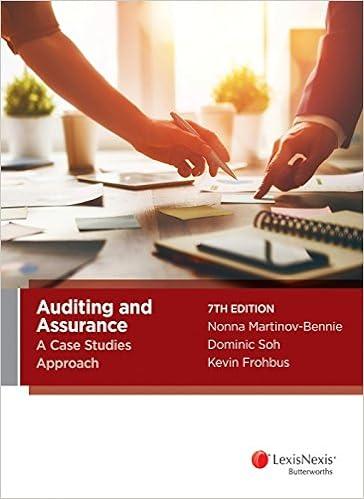Question
Port Ormond Carpet Company manufactures carpets. Fiber is placed in process in the Spinning Department, where it is spun into yarn. The output of the
Port Ormond Carpet Company manufactures carpets. Fiber is placed in process in the Spinning Department, where it is spun into yarn. The output of the Spinning Department is transferred to the Tufting Department, where carpet backing is added at the beginning of the process and the process is completed. On January 1, Port Ormond Carpet Company had the following inventories:
| Finished Goods | $62,000 |
| Work in Process-Spinning Department | 35,000 |
| Work in Process-Tufting Department | 28,500 |
| Materials | 17,000 |
Departmental accounts are maintained for factory overhead, and both have zero balances on January 1. Manufacturing operations for January are summarized as follows:
| Jan. | 1 | Materials purchased on account, $500,000 |
| 2 | Materials requisitioned for use: | |
| FiberSpinning Department, $275,000 | ||
| Carpet backingTufting Department, $110,000 | ||
| Indirect materialsSpinning Department, $46,000 | ||
| Indirect materialsTufting Department, $39,500 | ||
| 31 | Labor used: | |
| Direct laborSpinning Department, $185,000 | ||
| Direct laborTufting Department, $98,000 | ||
| Indirect laborSpinning Department, $18,500 | ||
| Indirect laborTufting Department, $9,000 | ||
| 31 | Depreciation charged on fixed assets: | |
| Spinning Department, $12,500 | ||
| Tufting Department, $8,500 | ||
| 31 | Expired prepaid factory insurance: | |
| Spinning Department, $2,000 | ||
| Tufting Department, $1,000 | ||
| 31 | Applied factory overhead: | |
| Spinning Department, $80,000 | ||
| Tufting Department, $55,000 | ||
| 31 | Production costs transferred from Spinning Department to Tufting Department, $547,000 | |
| 31 | Production costs transferred from Tufting Department to Finished Goods, $807,200 | |
| 31 | Cost of goods sold during the period, $795,200 |
| Required: | |
| 1. | Journalize the entries to record the operations, using the dates provided with the summary of manufacturing operations. Refer to the Chart of Accounts for exact wording of account titles. |
| 2. | Compute the January 31 balances of the inventory accounts. |
| 3. | Compute the January 31 balances of the factory overhead accounts. |
CHART OF ACCOUNTSPort Ormond Carpet CompanyGeneral Ledger
| ASSETS | |
| 110 | Cash |
| 121 | Accounts Receivable |
| 125 | Notes Receivable |
| 126 | Interest Receivable |
| 131 | Materials |
| 141 | Work in Process-Spinning Department |
| 142 | Work in Process-Tufting Department |
| 151 | Factory Overhead-Spinning Department |
| 152 | Factory Overhead-Tufting Department |
| 161 | Finished Goods |
| 171 | Supplies |
| 172 | Prepaid Insurance |
| 173 | Prepaid Expenses |
| 181 | Land |
| 191 | Factory |
| 192 | Accumulated Depreciation-Factory |
| LIABILITIES | |
| 210 | Accounts Payable |
| 221 | Utilities Payable |
| 231 | Notes Payable |
| 236 | Interest Payable |
| 251 | Wages Payable |
| EQUITY | |
| 311 | Common Stock |
| 340 | Retained Earnings |
| 351 | Dividends |
| REVENUE | |
| 410 | Sales |
| 610 | Interest Revenue |
| EXPENSES | |
| 510 | Cost of Goods Sold |
| 520 | Wages Expense |
| 531 | Selling Expenses |
| 532 | Insurance Expense |
| 533 | Utilities Expense |
| 534 | Supplies Expense |
| 540 | Administrative Expenses |
| 561 | Depreciation Expense-Factory |
| 590 | Miscellaneous Expense |
| 710 | Interest Expense |
1. Journalize the entries to record the operations, using the dates provided with the summary of manufacturing operations. Refer to the Chart of Accounts for exact wording of account titles.
PAGE 10
JOURNAL
ACCOUNTING EQUATION
| DATE | DESCRIPTION | POST. REF. | DEBIT | CREDIT | ASSETS | LIABILITIES | EQUITY | |
|---|---|---|---|---|---|---|---|---|
| 1 |
| |||||||
| 2 |
| |||||||
| 3 |
| |||||||
| 4 |
| |||||||
| 5 |
| |||||||
| 6 |
| |||||||
| 7 |
| |||||||
| 8 |
| |||||||
| 9 |
| |||||||
| 10 |
| |||||||
| 11 |
| |||||||
| 12 |
| |||||||
| 13 |
| |||||||
| 14 |
| |||||||
| 15 |
| |||||||
| 16 |
| |||||||
| 17 |
| |||||||
| 18 |
| |||||||
| 19 |
| |||||||
| 20 |
| |||||||
| 21 |
| |||||||
| 22 |
| |||||||
| 23 |
| |||||||
| 24 |
| |||||||
| 25 |
| |||||||
| 26 |
| |||||||
| 27 |
| |||||||
| 28 |
|
2. Compute the January 31 balances of the inventory accounts.
| Materials | ||
| Work in Process: | ||
| Spinning Department | ||
| Tufting Department | ||
| Finished Goods |
3. Compute the January 31 balances of the factory overhead accounts.
| Factory Overhead: | ||
| Spinning Department | ||
| Tufting Department |
Step by Step Solution
There are 3 Steps involved in it
Step: 1

Get Instant Access to Expert-Tailored Solutions
See step-by-step solutions with expert insights and AI powered tools for academic success
Step: 2

Step: 3

Ace Your Homework with AI
Get the answers you need in no time with our AI-driven, step-by-step assistance
Get Started


